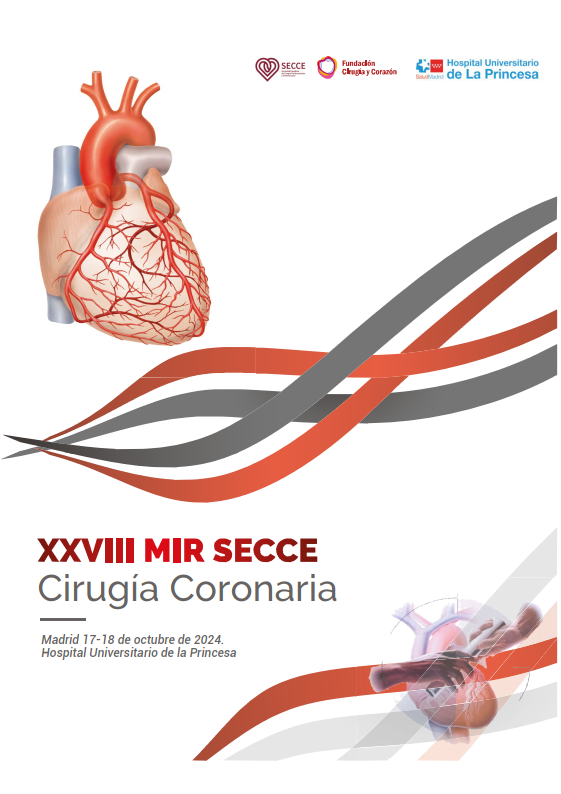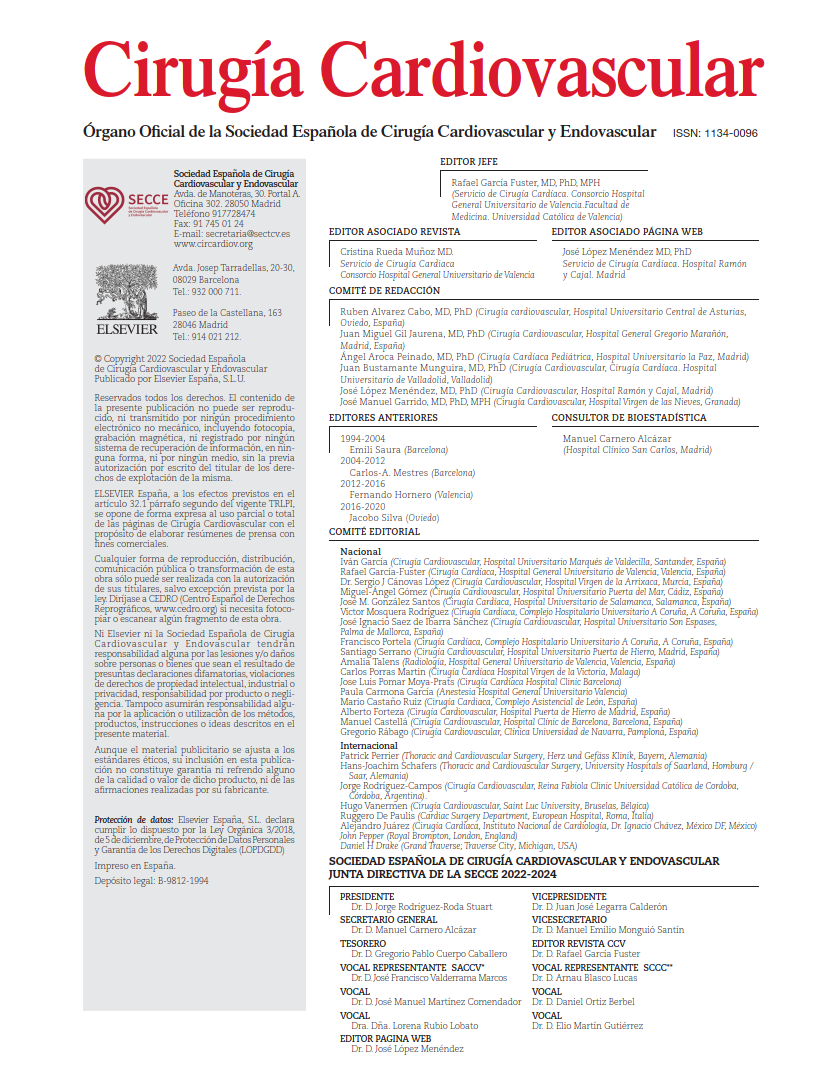This work presents the outcomes of patients undergoing surgical reintervention compared with those managed conservatively through exclusive antibiotic therapy or combined with debridement in patients with infected thoracic vascular grafts.
Among 66 patients diagnosed with thoracic vascular graft infection, 44 received conservative treatment: 28 (63.6%) with antibiotics alone and 16 (36.3%) with antibiotics plus selective debridement (resternotomy with irrigation ± negative pressure therapy). Median age was 64.6 years, 75% were male, and 63.6% had late infection (>4 months after surgery). The most frequent surgical history was type A dissection repair (54.5%). The pathogens most frequently isolated in the conservatively managed group were Streptococcus spp. (27.3%) and Staphylococcus spp. (24.9%).
Diagnosis was based on MAGIC criteria for vascular graft infection and Duke-ISCVID 2023 criteria for endocarditis, with a diagnostic workup including microbiological tests, inflammatory markers, echocardiography, computed tomography, and 18-FDG PET/CT. Therapeutic decisions were made within the cardiovascular infection multidisciplinary team, with weekly meetings to reassess clinical and radiological evolution.
All patients received targeted antibiotic therapy according to clinical practice guidelines and microbiology results, with a median duration of 7 months (interquartile range 6–18 months). Treatment discontinuation was decided on an individual basis, considering clinical normalization, resolution of laboratory abnormalities, and disappearance of pathological uptake on PET/CT. Patients with persistent uptake were placed on chronic suppressive therapy. Follow-up included regular clinical, laboratory, and imaging assessments.
In the conservative management group, in-hospital mortality was 2.2% (1/44) and 4-year cumulative survival reached 76.9%. Clinical cure without signs of infection was achieved in 70.4% of patients, while 25% required indefinite antimicrobial suppression. No relapses were reported; only one reinfection with E. coli occurred at 19 months. Overall mortality during follow-up was 18%. Five patients required unplanned reinterventions, including two late operations after prolonged periods of control.
The surgical reintervention group had an in-hospital mortality of 13.6% and a follow-up mortality of 23%, with an estimated 4-year survival of 76.9%.
The authors conclude that, in selected patients, inoperable or with excellent initial response, conservative treatment based on prolonged antibiotics ± selective debridement, guided by advanced imaging, may provide acceptable rates of infection control and mid-term survival. While it does not replace surgery when feasible, it represents a viable option in high surgical risk settings.
COMMENTARY
This prospective series is among the largest and with the longest follow-up published on conservative management of thoracic vascular graft infections. Its main strength lies in the systematic use of 18-FDG PET/CT as a tool to guide therapeutic response and determine antibiotic discontinuation, providing an objective and reproducible criterion for assessing the course of infection.
The patient profile that appears to benefit most from this strategy includes infections caused by pathogens of lower virulence, with a predominance of streptococcal infections and acute presentations with immature biofilm, which may have facilitated antibiotic eradication and supported the choice of a non-surgical approach. Moreover, the conservatively managed cohort showed a higher Charlson comorbidity index and greater burden of comorbidities, as well as more complex infections—circumstances that often lead to a formal surgical contraindication or an informed refusal by the patient. Although the main reasons for opting for conservative treatment were inoperability due to high surgical risk and consensus-based clinical decision-making, in many cases a favorable response to medical therapy during follow-up was also documented, with PET/CT playing a key role in this assessment.
The combination of a multidisciplinary team and advanced monitoring allowed tailoring the duration and modality of therapy, thus avoiding unnecessary indefinite antibiotic regimens. The low in-hospital mortality and absence of relapses likely reflect careful patient selection.
Nevertheless, this is a single-center study from a highly specialized institution, with potential selection bias and without an equivalent surgical comparator group. The generalizability of these findings to settings without similar expertise or access to PET/CT may therefore be limited.
In a context where clinical practice guidelines continue to recommend radical surgery as the reference treatment, this work provides a pragmatic perspective for a growing subgroup of patients who, due to their characteristics and type of infection, do not reach the operating room. Rather than a strategy of “therapeutic resignation,” imaging-guided conservative management can be understood as a planned and protocolized alternative. In selected cases, this approach may yield adequate infection control and acceptable prognosis, provided that patients are carefully selected and closely monitored.
REFERENCE
Van Hemelrijck M, Sromicki J, Risteski P, Boulos R, Buechel RR, Frank M, et al.; VASGRA Cohort. Outcomes of conservative treatment for thoracic vascular graft infections. Eur J Cardiothorac Surg. 2025 Jun 3;67(6):ezaf171. doi: 10.1093/ejcts/ezaf171.



